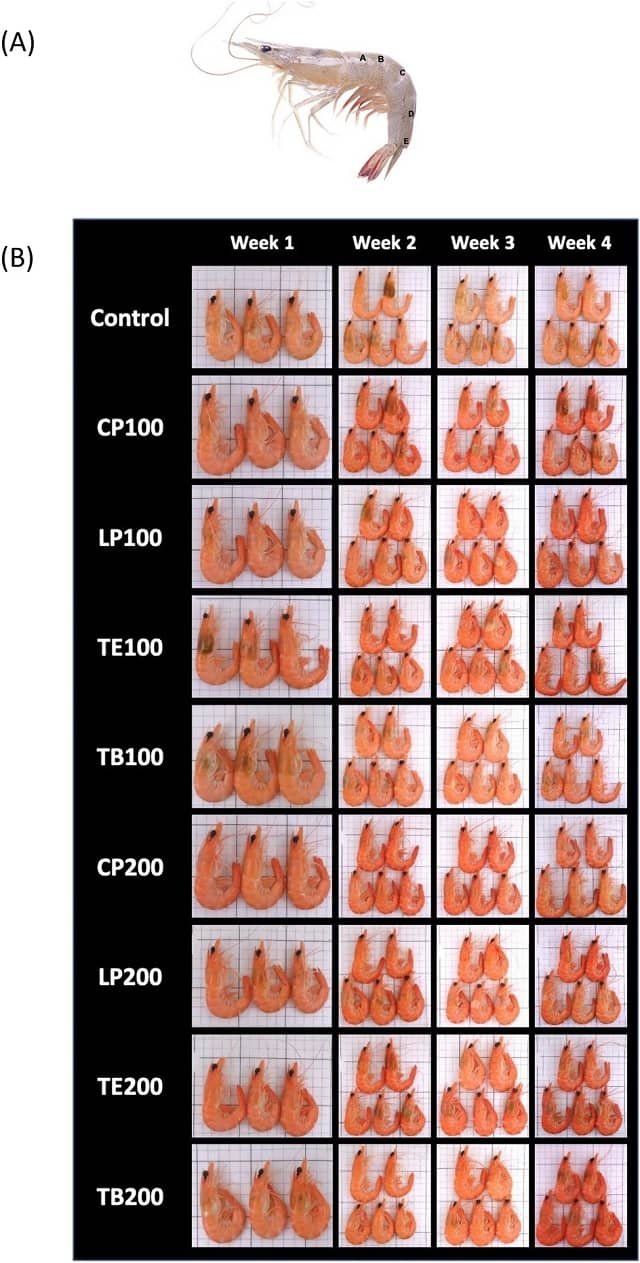
How can we optimize tilapia growth and health while maintaining sustainable production? A new study explores the potential of cinnamaldehyde, a compound found in cinnamon oil, as a revolutionary dietary supplement.
Scientists from IPB University (Indonesia) and Mindanao State University Tawi-Tawi College of Technology and Oceanography (Philippines) evaluated the effects of dietary 98% trans-cinnamaldehyde (CIN) on nutrient utilization, antioxidant capacity, and growth performance in Nile tilapia (Oreochromis niloticus).
Cinnamon’s secret weapon: cinnamaldehyde
Cinnamaldehyde is the active ingredient in cinnamon oil, responsible for its distinctive aroma and flavor. Beyond its culinary uses, cinnamaldehyde shows promise for sustainable aquaculture. This active ingredient boasts impressive properties that can benefit fish. Here’s how it could work:
- Insulin control: Cinnamaldehyde can help regulate blood sugar and lipid levels, potentially mimicking the effects of insulin.
- Improves fat metabolism: Cinnamaldehyde can stimulate fat burning for energy, resulting in leaner fish.
- Increases antioxidant activity: Antioxidants help combat free radicals, promoting overall fish health.
Previous studies using cinnamon powder and bark in fish diets have shown positive effects on growth. Additionally, research suggests that cinnamaldehyde can enhance growth performance, immune response, and antioxidant activity in various fish species.
The study
Researchers studied the effects of cinnamaldehyde on tilapia, focusing on nutrient utilization, antioxidant capacity, and overall growth. Fish fed with different levels of cinnamaldehyde showed significant improvements in several key areas:
- Nutrient utilization: Cinnamaldehyde improved the digestion and absorption of carbohydrates, suggesting better energy utilization.
- Antioxidant power: Fish fed with cinnamaldehyde exhibited higher activity of antioxidant enzymes, strengthening their defense against cellular damage.
- Growth performance: Overall growth rate, feed efficiency, and protein retention significantly increased in fish fed with cinnamaldehyde.
To maximize these benefits, the study identified an optimal dosage range of 0.5 to 0.75 grams of cinnamaldehyde per kilogram of feed. Interestingly, a more detailed analysis revealed a specific “sweet spot” of 0.42 grams per kilogram for optimal growth rate.
Unlocking nutritional benefits
As mentioned earlier, the study revealed that in specific doses, cinnamaldehyde significantly improved how tilapia digests and absorbs carbohydrates. This was confirmed by increased activity of amylase, a key digestive enzyme, and a positive glucose tolerance test.
The benefits extend beyond basic digestion. Cinnamaldehyde appears to influence how tilapia utilizes energy sources. The study suggests it promotes the use of glucose for energy storage and glycogen, while reducing the conversion of glucose into fat. Additionally, it seems to enhance fatty acid oxidation, further optimizing energy production.
Stay Always Informed
Join our communities to instantly receive the most important news, reports, and analysis from the aquaculture industry.
Antioxidant potency
Cinnamaldehyde isn’t just about growth; it also supports the fish’s internal defense system. The study found that specific doses significantly enhanced antioxidant activity in the liver, measured by higher levels of glutathione peroxidase and superoxide dismutase. These antioxidants combat harmful free radicals and promote overall fish health.
Growth enhancement
The most important result? Fish fed with cinnamaldehyde at specific levels showed remarkable improvements in growth. Weight gain, food intake, and overall growth rate showed significant increases. The study identified an optimal dose to maximize these benefits.
Conclusion
“An inclusion level of no more than 0.50 g/kg would be more economical for enhancing growth and could efficiently save protein in energy consumption. The optimal dose of cinnamaldehyde (0.42 g/kg) was lower than the 0.5% level,” the researchers conclude.
By incorporating natural and beneficial supplements like cinnamaldehyde, we can enhance fish health and growth while potentially reducing reliance on other additives. This translates into a stronger tilapia aquaculture industry.
The study was funded by Mindanao State University Tawi-Tawi College of Technology and Oceanography, Philippines through the Academic Personnel Development Program.
Contact
Dedi Jusadi
Department of Aquaculture, Faculty of Fisheries and Marine Science, IPB University (Bogor Agricultural University)
Campus IPB Dramaga Bogor, West Java 16680, Indonesia.
Email: dedidj@apps.ipb.ac.id
Mary Joyce Guinto-Sali
Aquaculture Department, College of Fisheries, Mindanao State University Tawi-Tawi College of Technology and Oceanography
Sanga-Sanga, Tawi-Tawi, Bongao 7500, Philippines
Email: chancellor@msutawi-tawi.edu.ph
Reference (open access)
Imlani, A. H., Jusadi, D., Suprayudi, M. A., Ekasari, J., Fauzi, I. A., Guinto-Sali, M. J., & Wahyudi, I. T. (2024). Evaluation of the effects of dietary cinnamaldehyde on growth and nutrient use in Nile Tilapia (Oreochromis niloticus). Aquaculture Reports, 36, 102125. https://doi.org/10.1016/j.aqrep.2024.102125
Editor at the digital magazine AquaHoy. He holds a degree in Aquaculture Biology from the National University of Santa (UNS) and a Master’s degree in Science and Innovation Management from the Polytechnic University of Valencia, with postgraduate diplomas in Business Innovation and Innovation Management. He possesses extensive experience in the aquaculture and fisheries sector, having led the Fisheries Innovation Unit of the National Program for Innovation in Fisheries and Aquaculture (PNIPA). He has served as a senior consultant in technology watch, an innovation project formulator and advisor, and a lecturer at UNS. He is a member of the Peruvian College of Biologists and was recognized by the World Aquaculture Society (WAS) in 2016 for his contribution to aquaculture.




